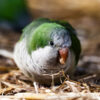- How Long Does A Quaker Parrot Live? - 17 May 2024
- 4 Hacks on Keeping Your Home Clean With Pets - 28 March 2024
- 5 Things to Know Before Bringing Home a New Kitten - 26 March 2024
The yellow bellied slider also known as Trachemys scripta scripta is a turtle that lives on both land and in the water. It belongs to the Emydidae family. These turtles are originally from the southeastern part of the United States specifically from Florida to southeastern Virginia. They are the most common type of turtle in that area. Yellow bellied sliders can be found in various places like slow moving rivers, swamps marshes, wetlands and ponds. Many people like to keep them as pets. Scientists also study them a lot because there are a lot of these turtles in one place. Making them good for learning about populations.
History Origin
Male yellow bellied sliders typically achieve lengths of 5–9 inches (13–23 cm) while females range from 8–13 inches (20–33 cm). Their upper shells or carapaces, are generally brown and black, often adorned with yellow stripes. The skin displays an olive green hue with distinct patches of yellow along the neck and legs.

True to their name, the plastron, or bottom shell, is predominantly yellow, featuring black spots along the edges. With age adults tend to develop a darker coloration.
Yellow-bellied sliders are sometimes mistaken for eastern river cooters, which also exhibit yellow stripes on the neck and undersides however the latter lack the green spots characteristic of the yellow bellied sliders. A distinctive feature is the “s”-shaped yellow stripe on their faces along with belly markings resembling question marks. Notably females of this species attain larger body sizes compared to their male counterparts within the same populations.
Where We Find?
Yellow bellied sliders inhabit the region spanning from southeastern Virginia to the coastal plains of the Carolinas, Georgia, northern Florida and eastern Alabama. In European nations where pond sliders have become established and invasive. They pose a threat to native biodiversity by gaining a competitive advantage over indigenous terrapins.
Behavior
Yellow-bellied sliders engage in mating throughout the spring, summer and autumn seasons, displaying polygynandrous behavior. The courtship ritual involves biting, foreclaw displays and chasing. Notably. These sliders can interbreed with other T. scripta subspecies such as the commonly sold red-eared sliders posing a concern as their introduction into local environments led to Florida prohibiting the sale of red eared sliders to safeguard the native yellow bellied slider population.
Mating activities take place in the water while suitable terrestrial areas are essential for nesting females to lay eggs. Typically females lay 6–10 eggs at a time with larger individuals capable of laying more. The incubation period for the eggs lasts 2–3 months and hatchlings often remain near the nest throughout winter. Hatchlings primarily follow a carnivorous diet consuming insects, spiders, crustaceans, tadpoles, fish and carrion.
Blood Thirsty
Yellow bellied sliders face various threats from predators such as raccoons, opossums, red foxes and skunks. Apart from predators they can also be affected by respiratory infections marked by symptoms like wheezing, drooling or puffiness in the eyes often caused by bacteria. Another concern for these turtles is the development of fungal spores leading to shell rot. Additionally they may be at risk of metabolic bone disease. A condition that can hinder the growth of their shells making them more brittle and prone to damage.
Lifespan

Yellow bellied sliders can live for more than 30 years in the wild and over 40 years when kept in captivity. Because they live a long time many of them need to stay alive to keep their populations steady. Unfortunately changes people make to their habitats like building roads and attracting predators with human provided food can be bad for them. In places with a lot of buildings. It might be harder for new turtles to be born because there are fewer good spots for them to live and lay eggs.
Lab researcher on Yellow Bellied Slider

With Gibbons a researcher from the Savannah River Ecology Lab has dedicated over three decades to studying freshwater turtles. During this time he has marked and measured more than 10,000 yellow-bellied sliders. His research reveals that these turtles can live for more than 30 years in their natural habitat. Gibbons is particularly interested in understanding the role that sliders and other reptiles play in the wetland habitats of the southeastern ecosystem.
Providing Shelter for the Yellow-Bellied Slider
Aquariums work well for young sliders but as these turtles grow, providing adequate housing becomes more challenging. The recommended tank size for an adult slider is 75 to 100 gallons. Ensure there’s a basking dock and clean water in the indoor enclosure. Since these turtles eat and produce waste in their aquatic environment. It’s crucial to have a tank filter rated two to three times the volume of water. Canister filters or submersible biological filters are suitable options.
Without a filter you’ll need to perform weekly partial water changes and water quality testing. Which can be both time consuming and messy. Dirty water can lead to various health problems for your turtle. Before using water treat it with a water conditioner to remove chlorine and other additives that can disrupt your biological filter and impact your pet’s well-being. If you have an outdoor pond in a securely fenced yard.
Also Read: Do Turtles Have Teeth
Wrapup
The Yellow Bellied Slider offers a delightful journey into the world of aquatic companionship. With proper care and attention. These charming turtles can become cherished members of your family. Start your adventure with Yellow Bellied Sliders today
















